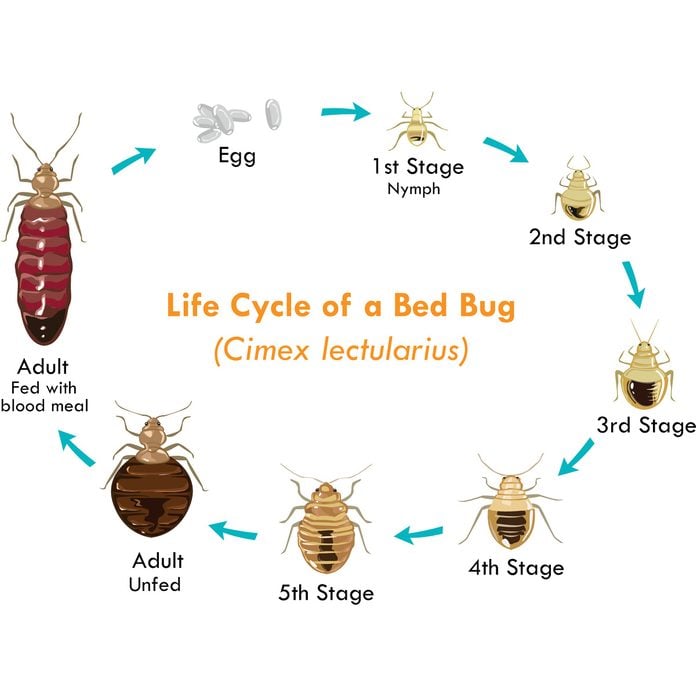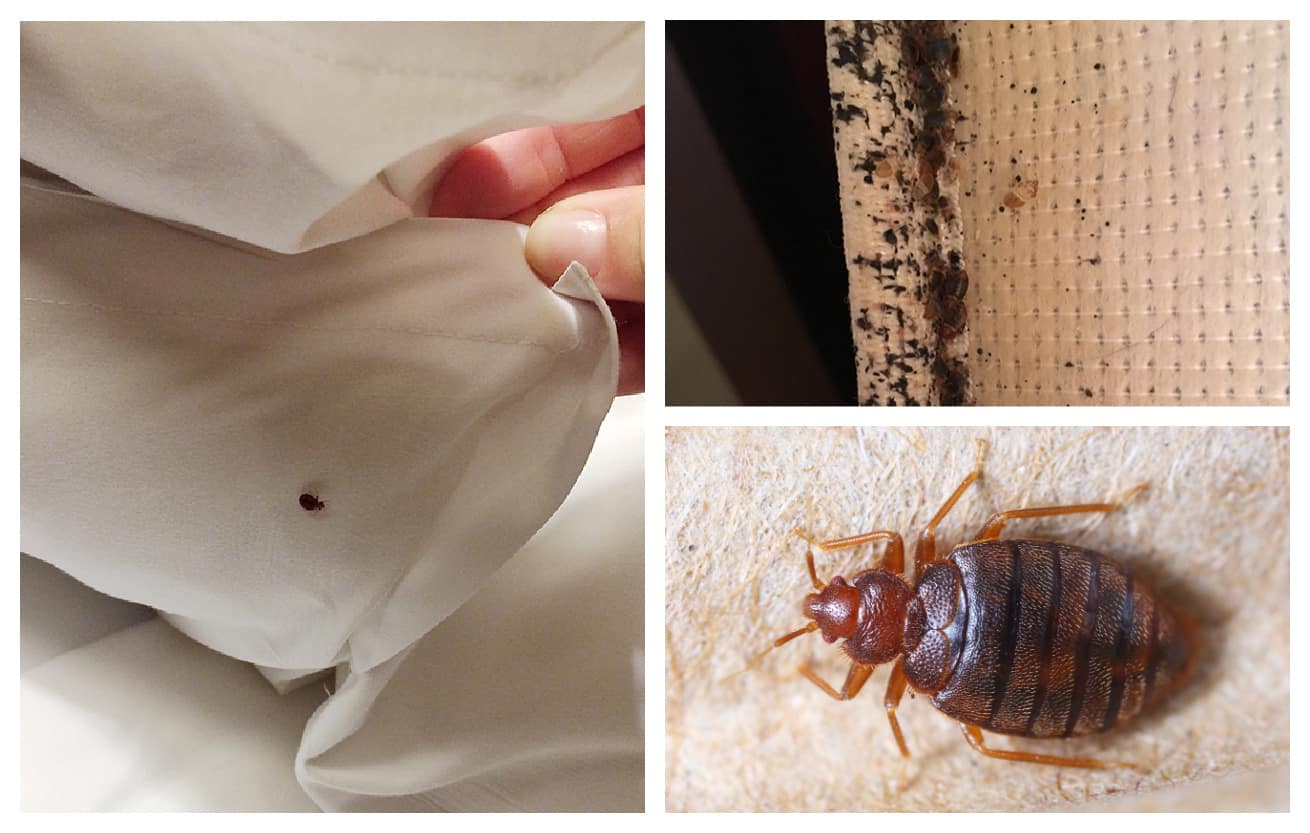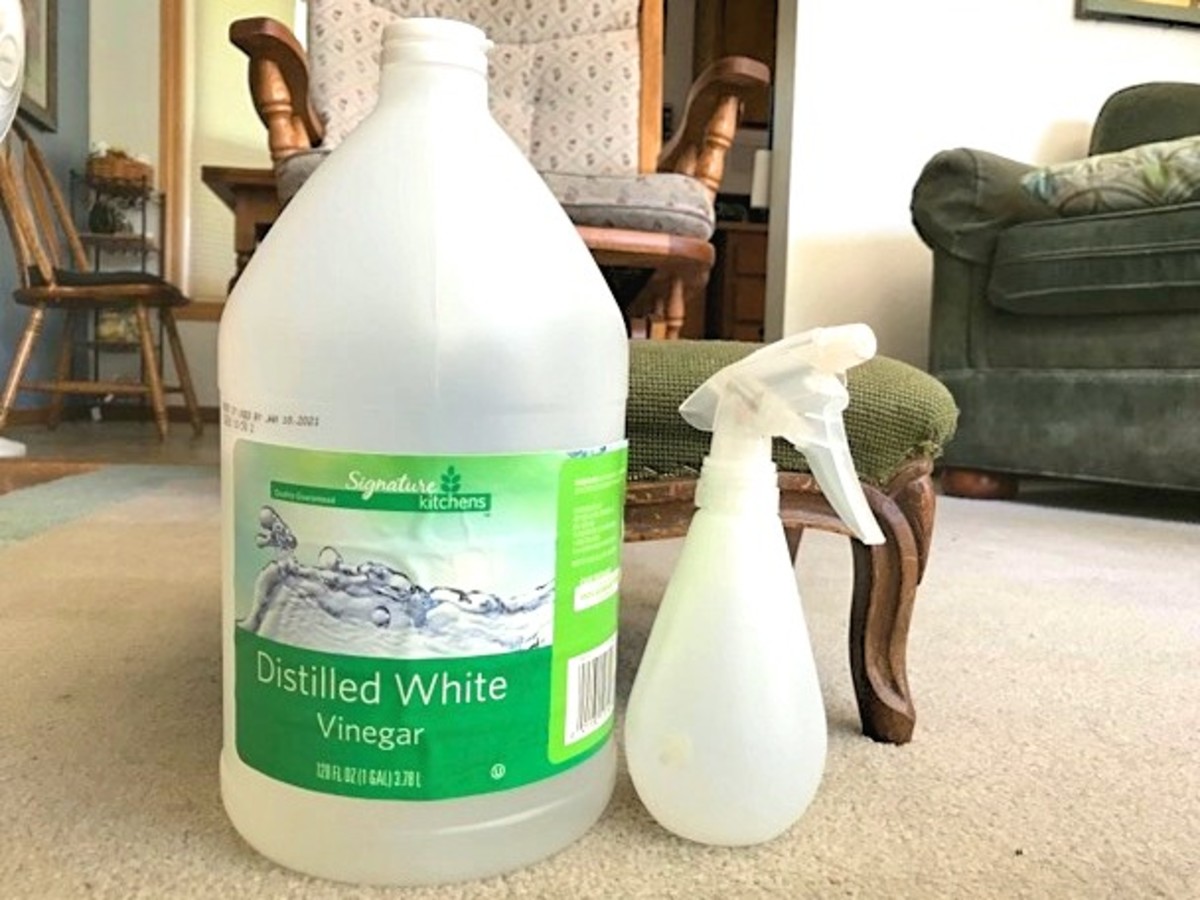To eliminate bed bugs DIY, use a vacuum to remove bugs and eggs, then wash bedding in hot water. Additionally, reduce clutter to eliminate hiding spots and use a steam cleaner on infested areas.
Dealing with a bed bug infestation can be a challenging and stressful experience. These tiny blood-sucking pests can quickly spread and are notoriously difficult to eradicate. However, with the right approach, it’s possible to eliminate bed bugs using do-it-yourself methods.
We’ll explore effective strategies to get rid of bed bugs without the need for professional intervention. By following these comprehensive tips, you can successfully tackle a bed bug infestation and restore peace and comfort to your home.
Identifying And Understanding Bed Bugs
Physical Appearance
Bed bugs appear as small, oval-shaped insects with flat bodies ranging in color from brown to reddish-brown.
Behavior And Habits
Bed bugs are nocturnal creatures that feed on blood, attracted by body heat and carbon dioxide. They hide in cracks and crevices during the day.
Signs Of Bed Bug Infestation
Recognizing the signs of a bed bug infestation is essential for effective elimination. Here are the key indicators:
Bites And Irritation
One common sign is waking up to itchy red marks on your skin.
Blood Spots And Stains
Keep an eye out for tiny blood spots on your sheets or mattress.
Fecal Matter And Exoskeletons
Another sign is the presence of small, dark fecal matter or shed exoskeletons.
Preparation For Bed Bug Treatment
Prepare for bed bug treatment by decluttering and vacuuming the infested areas. Encase your mattress and box spring with protective covers, wash and dry all linens on high heat, and use a steam cleaner on furniture and carpets. Follow these steps to get rid of bed bugs DIY.
Before you start treating your bed bug infestation, it’s crucial to properly prepare your home. Taking the right steps will help maximize the effectiveness of your DIY bed bug treatment. Here are some key preparations to consider:
Remove Clutter And Clean
One of the first steps in preparing for bed bug treatment is decluttering your living space. Bed bugs love hiding in cluttered areas because it provides them with plenty of hiding spots. Clearing away any unnecessary items will make it easier to locate and treat the infested areas.
Additionally, don’t forget to thoroughly clean your home. Vacuum all floors, including carpets, rugs, and upholstery, paying close attention to cracks and crevices where bed bugs might be hiding. Remember to vacuum mattresses and box springs as well.
- Clear away unnecessary items to eliminate bed bug hiding spots.
- Vacuum all floors, including carpets, rugs, and upholstery, paying extra attention to cracks and crevices.
- Remember to vacuum mattresses and box springs to remove any bed bugs or eggs.
Wash And Dry Infested Items
Bed bugs often invade your bedding, clothing, and other fabric items. To effectively eliminate them, you’ll need to wash and dry the infested items on high heat.
Gather all your bed linens, pillows, clothing, curtains, and any other washable fabrics. Place them in sealed plastic bags and bring them directly to the washing machine. Use hot water and a high-temperature dryer setting to ensure that any bed bugs or eggs are completely eradicated.
- Collect all bedding, clothing, curtains, and other washable fabrics.
- Place them in sealed plastic bags before transporting them to the washing machine.
- Wash everything using hot water and high-temperature dryer settings to effectively kill any bed bugs or eggs.
Seal Cracks And Crevices
Bed bugs can easily crawl into small cracks and crevices, making it difficult to completely get rid of them. To prevent their return, make sure to seal all cracks and crevices in your walls, baseboards, and furniture.
You can use caulk or a similar sealant to seal any visible cracks. Additionally, inspect and repair any damaged wallpaper or loose electrical outlets that could serve as an entry point for these pests.
| Key points: |
|---|
| Seal all cracks and crevices using caulk or a suitable sealant. |
| Inspect and repair any damaged wallpaper or loose electrical outlets that could provide access for bed bugs. |

Credit: www.familyhandyman.com
Non-chemical Bed Bug Treatments
Vacuuming
“`Are bed bugs giving you sleepless nights? Try the non-chemical bed bug treatment techniques to eliminate the pesky pests from your living space. Vacuuming is an effective method to physically remove bed bugs and their eggs from mattresses, carpets, and upholstery. Using a vacuum cleaner with a high-efficiency particulate air (HEPA) filter can efficiently suck up the bed bugs and their eggs, significantly reducing their population in your home.“`htmlSteam Treatment
“`In addition to vacuuming, steam treatment is another non-chemical approach to combat bed bug infestations. The high temperature of the steam effectively kills bed bugs and their eggs, penetrating into the cracks and crevices where these pests typically hide. By using a steam cleaner, you can target bed bug hotspots such as mattresses, furniture, and baseboards, thereby eradicating the infestation without relying on chemical pesticides.“`htmlFreezing
“`Freezing is a practical non-chemical method to eliminate bed bugs from infested items. Exposing the affected items to sub-zero temperatures for a sustained period can effectively kill the bed bugs and their eggs. Items such as clothing, bedding, and small furnishings can be sealed in plastic bags and placed in a freezer at 0°F (-18°C) or lower for several days, ensuring that the bed bugs are eradicated without the use of potentially harmful chemicals.These non-chemical bed bug treatments offer eco-friendly solutions for dealing with bed bug infestations, allowing you to effectively eliminate these pests while minimizing exposure to hazardous pesticides. Incorporating these techniques into your bed bug control strategy can help create a safer and healthier living environment for you and your family.Chemical Bed Bug Treatments
Chemical bed bug treatments are an effective way to eliminate these pesky insects from your home. When it comes to combating bed bugs, it’s crucial to know your options and choose the most effective method for your unique situation.
Insecticide Sprays
BoldInsecticide sprays Boldare a popular choice as they can be directly applied to infested areas, killing bed bugs on contact. When using insecticide sprays, ensure to target areas where bed bugs are most likely to hide, such as seams, folds, and tufts of mattresses, as well as cracks and crevices in furniture and walls. Be sure to carefully follow the instructions provided by the product manufacturer to ensure safe and effective application.
Dust And Powder Insecticides
Dust and powder insecticides, such as diatomaceous earth, are effective for treating areas where liquid sprays may not be suitable, such as electrical outlets and appliances. These products work by drying out and damaging the exoskeleton of bed bugs, leading to their demise. Applying dust and powder insecticides requires precision and careful handling to avoid inhalation and skin contact.
Bed Bug Foggers
Bed bug foggers, also known as bug bombs, are aerosol insecticide products that disperse pesticides throughout a room, reaching areas that may be challenging to access with traditional sprays. When using bed bug foggers, it’s important to closely follow the instructions, including preparing the room properly, sealing off the area, and vacating the premises during the treatment and airing out the space afterwards.

Credit: www.everydaycheapskate.com
Additional Bed Bug Control Measures
Along with the effective DIY methods discussed earlier, there are a few additional bed bug control measures that you can implement to enhance the success of your eradication efforts. These measures focus on long-term prevention and creating barriers to prevent bed bugs from infesting your home again. Let’s explore these measures in detail:
Using Bed Bug Mattress Encasements
Investing in bed bug mattress encasements is a smart move to protect your bed from future infestations. These encasements act as a protective barrier, preventing bed bugs from penetrating and hiding in your mattress. To use a bed bug mattress encasement, follow these steps:
- Choose an encasement made of high-quality material that is designed specifically for bed bugs.
- Remove all bedding and thoroughly vacuum your mattress to eliminate any existing bed bugs and eggs.
- Carefully fit the encasement around your mattress, ensuring a tight seal.
- Make sure the encasement covers the entire mattress, including the seams and zippers.
- Leave the encasements on for at least a year to ensure any bed bugs trapped inside die of starvation.
Regularly Washing Bedding And Linens
Keeping your bedding and linens clean is essential for preventing bed bugs from settling in. Follow these steps to ensure your bedding stays bug-free:
- Wash all bedding, including sheets, pillowcases, and blankets, in hot water.
- Dry your bedding on the highest heat setting possible.
- Consider using a mattress encasement for further protection.
- If you suspect bed bugs, inspect and wash your bedding more frequently.
Reducing Clutter And Sealing Cracks
Reducing clutter and sealing cracks are crucial in eliminating hiding spots for bed bugs and preventing their re-infestation. Here are some steps you can take:
- Declutter your living space by getting rid of unnecessary items.
- Regularly vacuum and clean all areas, including furniture, carpets, and baseboards.
- Seal any cracks and crevices with caulk or sealant to eliminate potential hiding spots for bed bugs.
- Inspect and seal any gaps or openings around windows and doors.
- Repair any cracks or holes in walls or furniture using wood putty or appropriate sealant.
By following these additional bed bug control measures, you can boost the effectiveness of your DIY eradication efforts and maintain a bed bug-free home. Stay diligent and consistent with your preventive actions to keep these bothersome pests at bay.
When To Seek Professional Help
Dealing with a bed bug infestation can be overwhelming, but there are times when DIY methods might not be enough. Knowing when to seek professional help is crucial for effectively eliminating bed bugs from your home.
Severe Infestations
If you have a severe bed bug infestation, with widespread presence throughout your home, it’s best to contact a professional pest control company.
Repeated Unsuccessful Treatments
After trying multiple DIY treatments without success, it may indicate that the bed bugs have developed resistance or the infestation is more deep-rooted. At this point, professional intervention is necessary.
Health Concerns
For individuals who are sensitive to insect bites or have respiratory issues, prolonged exposure to bed bug treatments can pose health risks. In such cases, it is wise to seek help from licensed professionals.
Preventing Bed Bug Infestations
Inspecting Secondhand Furniture
Before bringing used furniture into your home, thoroughly inspect for any signs of bed bugs.
Avoiding Bringing Used Items Indoors
Be cautious when acquiring secondhand items as they may harbor bed bugs, leading to an infestation.
Taking Precautions While Traveling
When traveling, be mindful of bed bug risks and take preventive measures to avoid bringing them home.

Credit: dengarden.com
Frequently Asked Questions On How To Eliminate Bed Bugs Diy?
How Can I Identify Bed Bugs In My Home?
You can identify bed bugs by looking for small, reddish-brown insects, dark spots on your mattress, or red, itchy bites on your skin. Checking behind furniture and using a flashlight can help spot them.
What Are Some Effective Diy Methods To Eliminate Bed Bugs?
Using a steam cleaner, vacuuming regularly, and encasing your mattress and pillows in special bed bug covers can help eliminate bed bugs. Additionally, washing and drying your bedding at high temperatures can kill any existing bed bugs.
Are There Any Natural Remedies For Getting Rid Of Bed Bugs?
Yes, some natural remedies for bed bugs include using diatomaceous earth, tea tree oil, and lavender oil. These substances are known for their ability to repel and kill bed bugs without harmful chemicals.
How Can I Prevent Bed Bugs From Returning After Diy Treatment?
To prevent bed bugs from returning, regularly vacuum your home, keep your bedroom clutter-free, and inspect secondhand furniture before bringing it into your home. Additionally, sealing cracks and crevices can help keep bed bugs out.
Conclusion
To eradicate bed bugs on your own, follow these proven DIY methods. Clean and declutter your space regularly, vacuum all areas thoroughly, and launder infested bedding and clothing using high heat. Utilize natural remedies like steam cleaning and diatomaceous earth to target bed bug hiding spots.
Implement preventive measures, such as encasing mattresses and sealing cracks, to avoid future infestations. By taking these steps, you can successfully eliminate bed bugs without the need for professional intervention. Rest easy and ensure a bug-free home!
Related posts:

I’m MD Tanvir, and I bring years of expertise gained from working closely with pest control companies to the forefront. My journey in the industry has inspired me to launch Bug Battler, a platform aimed at equipping people with the know-how to combat pests autonomously. Through Bug Battler, I aim to empower individuals with practical insights to tackle pest infestations effectively.

